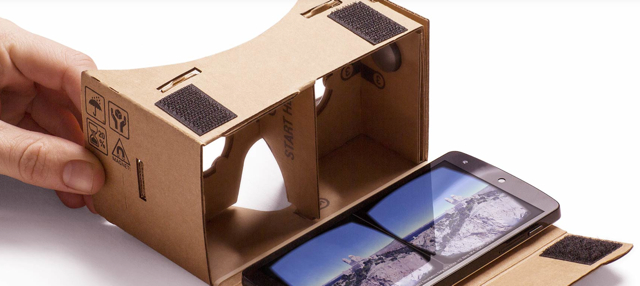Google Updates Cardboard, Develops Standalone VR Headset
February 15, 2016
Google is doubling down on its virtual reality investment with a new $20 version of Cardboard, which uses the smartphone as a screen and a standalone, all-in-one headset that doesn’t need to be tethered to a smartphone, computer or game console. Up until now, Google, which has sold five million Cardboard VR viewers since late 2014, has been seen as experimenting with VR. With the new VR headset — and appointment of Clay Bavor as its first VR chief, Google is entering the VR arena in earnest.
The Wall Street Journal notes that Google’s upcoming all-in-one headset will create a “middle ground” in VR devices, between the $599 Oculus headset connected to an expensive computer, and very inexpensive viewers such as Google’s own Cardboard, whose new version will feature the smartphone as a screen and chips and sensors in the plastic viewer.
The new Cardboard could possibly be released at Google’s annual developer conference in May, when the company will also unveil an update of the Android mobile operating system to handle VR devices.
Google’s standalone headset, says a source, will include a screen, high-powered processors and outward-facing cameras and a chipset from Movidius that uses the cameras’ feeds to track the motion of the user’s head. Movidius has said it works with many companies on VR and AR, notes WSJ.
Google has been mum on when it might unveil the standalone headset, but by developing it, the company enters an increasingly crowded and competitive marketplace that includes the Oculus Rift, as well as offerings from HTC and Sony, both of which require a PC or game console, and Samsung’s $100 viewer that relies on the company’s phones.
“What’s pretty clearly evolving here is a platform war,” says Macquarie Capital analyst Ben Schachter.
If so, the war is for a technology that “still appears years away from widespread adoption,” explains WSJ, “in part because high-end headsets arriving this year require expensive PCs, while inexpensive smartphone viewers can give users headaches.”


No Comments Yet
You can be the first to comment!
Sorry, comments for this entry are closed at this time.